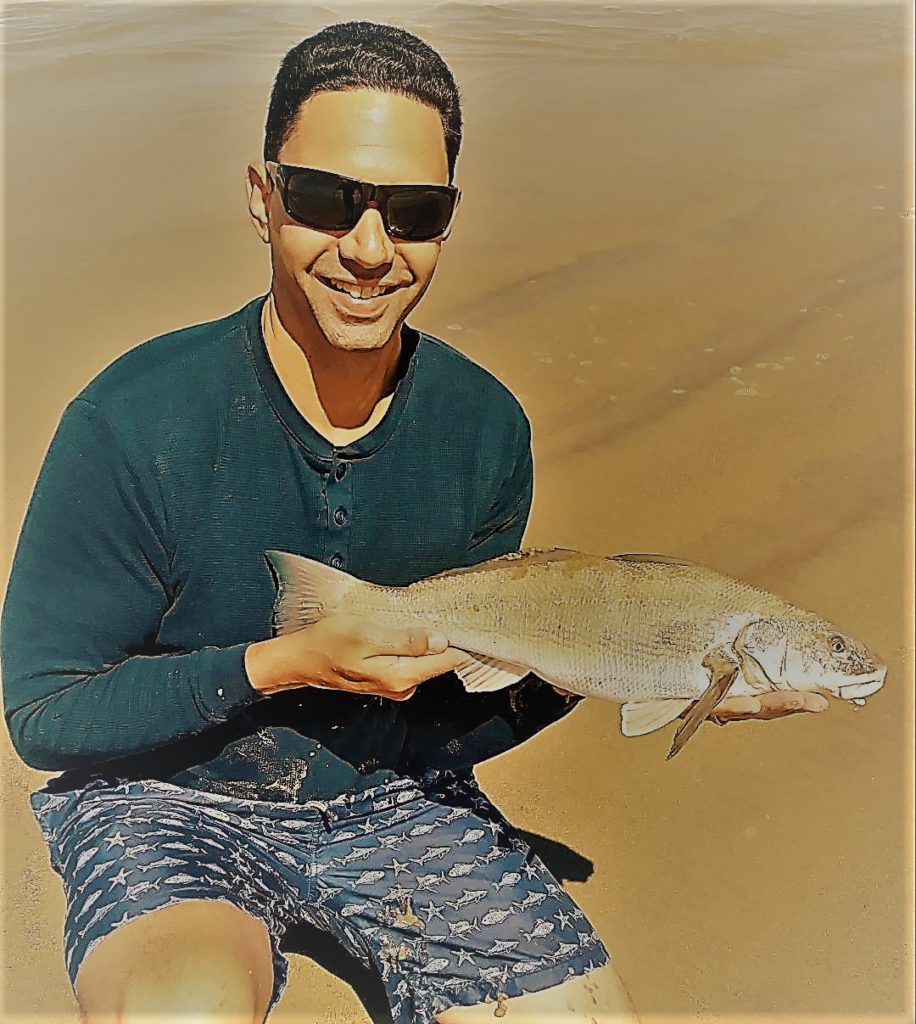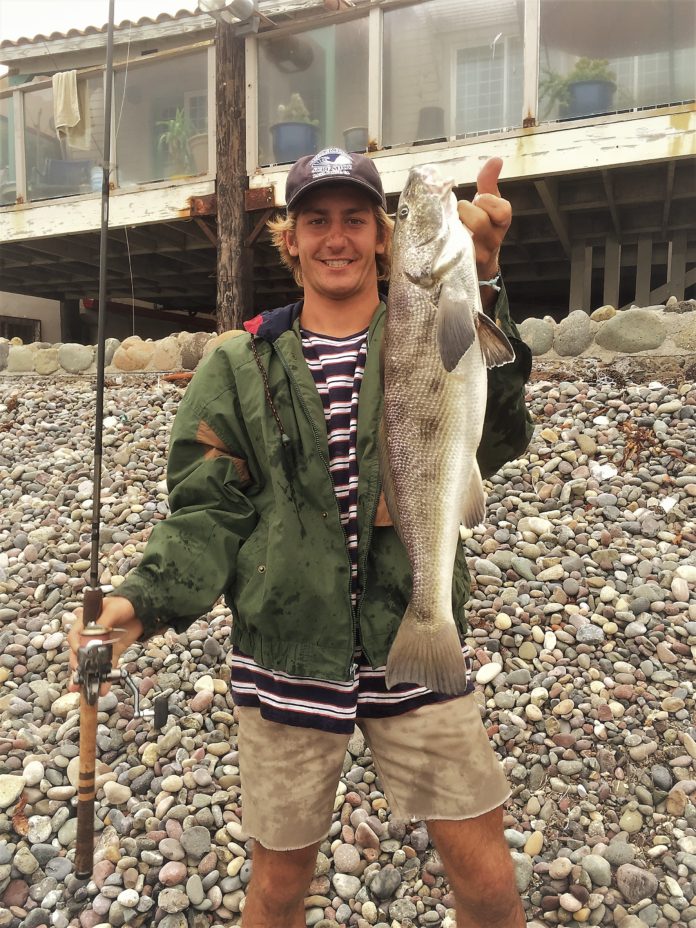Small things are large matters when pursuing this wily gamefish
BY GUNDY GUNDERSON
Corbina is rarely a fish that you catch one after the other. It is a fish where most bites are earned. Earned through execution, diligence, patience and persistence. In the thin, gin clear waters of a beach break, they are a skittish biter put off by the slightest hint of inauthenticity. Anglers are punished by clumsy presentation or poor execution. Drawing the angler down to thin light line in order to get a bite, once hooked, they are powerful swimmers, with sizzling runs that test and often beat light tackle gear and rigging.
Corbina angling may be the most technical fishing in Southern California saltwater fishing. Details matter when you attempt to hook spooky fish that grow to 7 pounds and land them on light tackle in a hostile environment. There are so many things that can go wrong. Experience is the great teacher and here is a handful of ideas and concepts that may help a fledging corbina angler hook and land more of these dazzling fish.
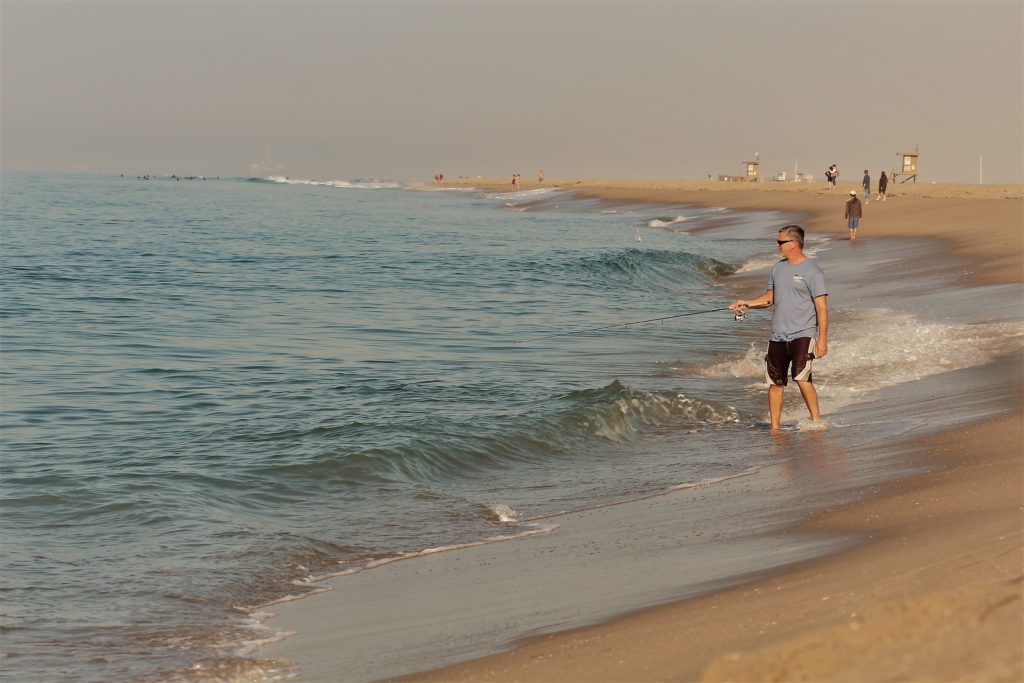
Blind strike vs. sight casting
Many uninitiated corbina anglers believe that the majority of fish are taken by sight casting. This is a scenario where the targeted fish is spotted and seen first, then a cast is made to the cruising fish. I think more fish, however, are taken on the blind strike. This means that you are casting your bait to a spot that the fish frequent but not necessarily to a particular fish. It’s an important distinction because you will hook more fish by recognizing and embracing both tactics.
To begin, any time you spot a cruising fish you should make a cast to it. They are very spooky and denials are more common than takes. On any given day or moment, they may strike, so you have to give it a shot. It takes a near perfect presentation, in the natural path of the fish, to get a take. If you do not lead the fish properly and land too close, the fish will spook. The bait must be stationary and natural in appearance when the fish comes upon it, to entice a strike. If the fish spots you first, it’s rare to get a bite. If the opportunity presents itself, cast to a cruising fish but keep in mind, if it isn’t productive, change tactics.
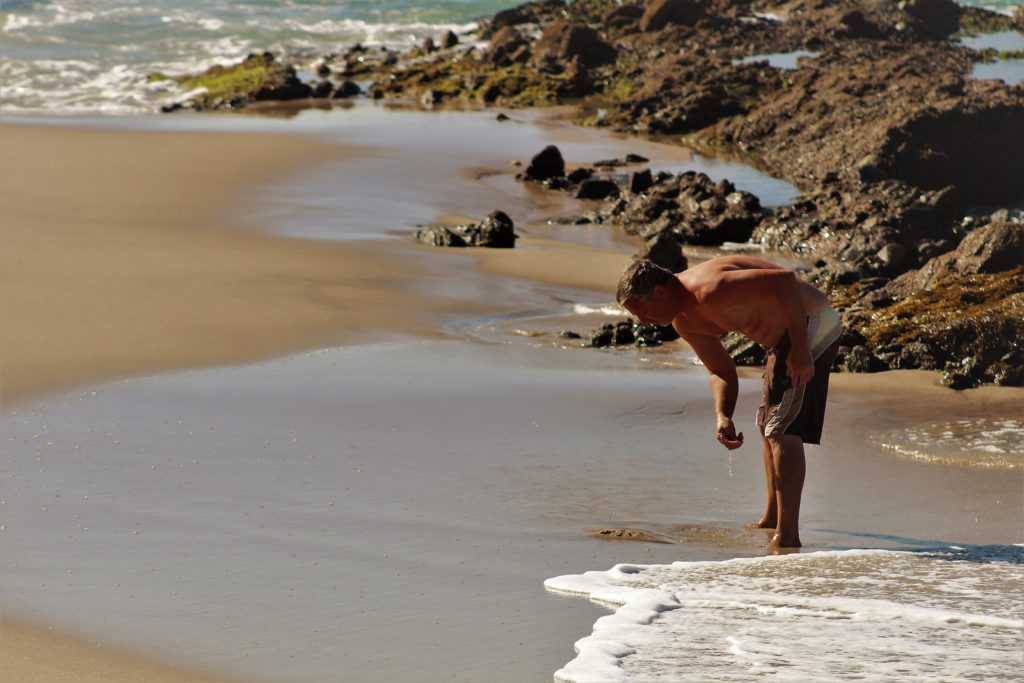
I believe more fish are hooked on a blind strike. This is when the bait is cast to a feature that fish have been cruising, areas of transit for feeding corbina. Examples would be casting to a depression, trench, a rip current, reef edge, pier piling, creek mouth or point. The idea is that you may see fish sliding up on the beach to feed on crabs but you stay with a stationary presentation anticipating a fish happening upon your bait. The visual is important in that you know fish are present. Many times I’ve chased around sight cast fish and after the frustration of no takes, settled down and soaked a bait in a high traffic area and finally got the bite. Stay flexible and don’t just approach it one way.
Good line choices
There are a few important nuances in choosing line class and type of line when corbina fishing. You have to weigh the positives and negatives of each choice. In the best scenario, the choices you make are an attempt to strike a balance. You try to minimize the negatives and, in effect, compromise the positives. For example, corbina are very selective feeders. They are notoriously line shy. Some anglers like to fish 4-pound test line. You will get more bites but the challenge will come when you hook a trophy size fish. Corbina can range up to 7 pounds with 5-pound fish not uncommon. To land a large fish in the surge and swell and on the steep abrasive beaches with 4-pound, everything must go right.
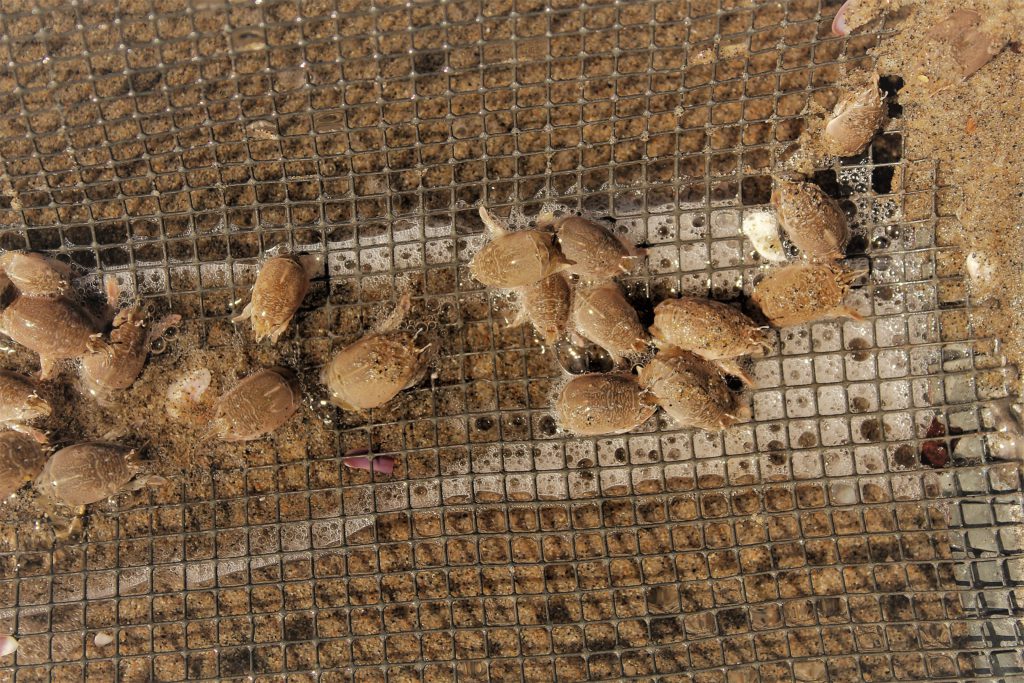
If you would rather hook and land many smaller fish on light line, then you may sacrifice your chance at landing a trophy. On the other side, you will land most of the big ones on 8-pound test, but you will find it difficult to get bit with any consistency. For these reasons, I choose to fish 6-pound. I still get bit well yet I also have a good shot at landing a big one. The heavy line is useless if it doesn’t get bit. The step-up from 4-pound to 6-pound test is significant. You can put much more pressure on a fish. If I’m not getting bit, I’ll first use a piece of fluorocarbon leader. There are scenarios where the negatives of are mitigated and it may make sense. If you are fishing a flat beach with no rock or structure with a minimal swell, then your chances of landing a big fish on 4-pound are much better. If you are fishing an exotic bait like ghost shrimp on a moonlit night, then you might not sacrifice bites by moving up to 8-pound test. As a rule, I begin with my standard 6-pound test, then make adjustments accordingly.
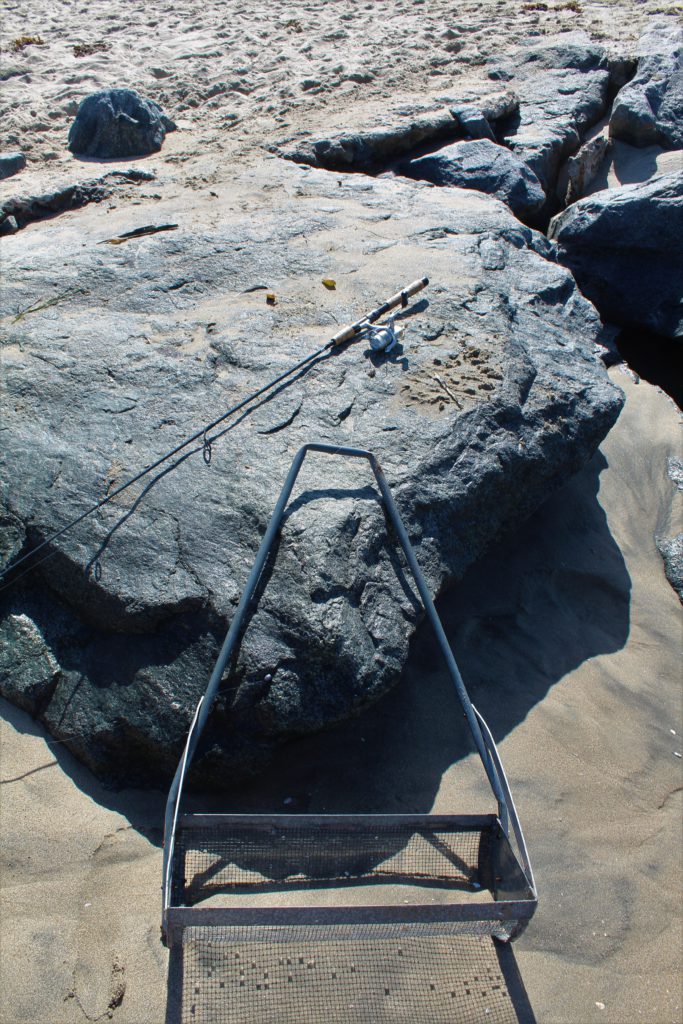
Stay on the bite
This is a big one. Unfortunately, it is the most difficult to achieve. Time on the water is a huge commodity in fishing. If you can string a few days and sessions of fishing together you really begin to dial in the bite. That means making adjustments as to time of day and tide, bait preferences, presentation, sinker weight and many other small but important details. Recent experience will inform on all these subjects.
With changing tides, swells, wind and other conditions, each day on the beach can present different conditions. The feeding nature of the fish also changes with moon phases, beach traffic, feed availability or preference. If you are consistently on the bite, you can observe these often subtle, changes and make the correct adjustments. I call it dialing in the bite. This intrinsic knowledge will catch you more fish than anything else.
Tide movements are an important example. Corbina often bite best when the tide creates the ideal conditions to feed. The times of these bite windows is what every angler is trying to establish. As the tides change daily, the times of these feed windows changes with the tides. If you fish every day or two, you can stay with these windows. If you only fish once a week, it’s tough to keep a beat on the bite. You have to just shoot for a right time.
If I fish a 2-hour window and get bit in the last half hour, the next day I‘ll begin at the time of the tide of that last half hour, then fish the additional hour and a half. As the time of the tide advances, often, so does the bite. Another example observed through repetition is bait choice. Corbina can show preferences for sandcrabs, softshells, mussel, ghost shrimp or bloodworms. These preferences can be established through consistently fishing. Your best friend should be your local beach tackle shop. They can often bridge the gap in information since the last time you fished. That’s why it is important to patronize these businesses. You’re not going to get this information from anywhere else. If these businesses fail, so does a vital information source.
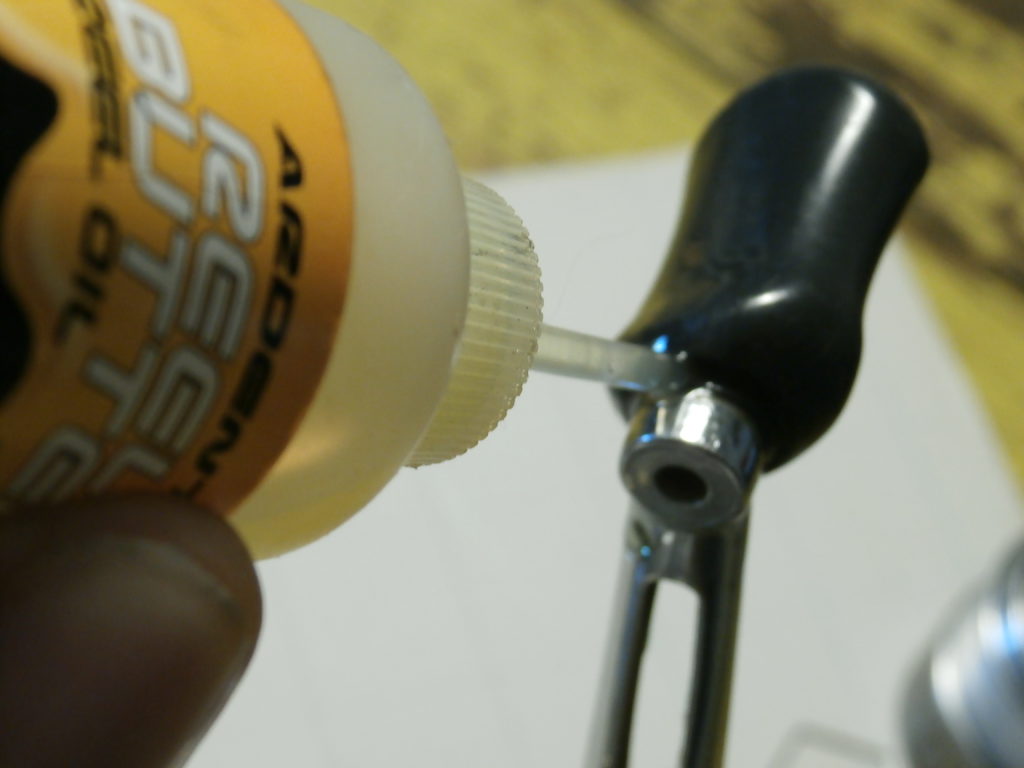
A tide log is a good way to observe bite trends. The ones with a graphic representation are best. Record the time periods fished, any pertinent conditions observed and catches made. It’s also a good idea to fish just a handful of good spots. You will become intimate with the characteristics of the spots. Over time, you will establish where the fish stage, if they tend to bite at lower tides or higher tides, where the sandcrabs can be located especially the bait-size ones, how the swell affects the bite. All these things can vary from beach to beach. If you fish a whole bunch of different beaches, you never really get a beat on any of them.
Back reel
This is a specialized technique but it may save the day under certain conditions. When you hook a big fish on light tackle in the surf there are a lot of dynamics involved. The wave and swell size, the steepness of the beach and the size of the fish all can combine to put tremendous pressure on your fishing line or leader. With light spinning reels built with smaller drag systems there are often two drag settings. One is the initial pull that sets the spool in motion. This is the heavier setting. Once the spool is in motion, you have a second lighter setting that is usually the one desired. In the surge of the swell, or during the erratic heavy runs of a corbina, that initial additional pressure needed to kick the spool into motion can often overload the pound test rating of the line and the line will straight break. A classic example is on a steep beach where you have pulled the fish up the slope and a wave recedes and suddenly sucks the fish back down the slope of the beach. If that initial drag setting is too strong, the line will part on the shock of the pull. Most spinning reel drag systems are a victim of this subtlety.
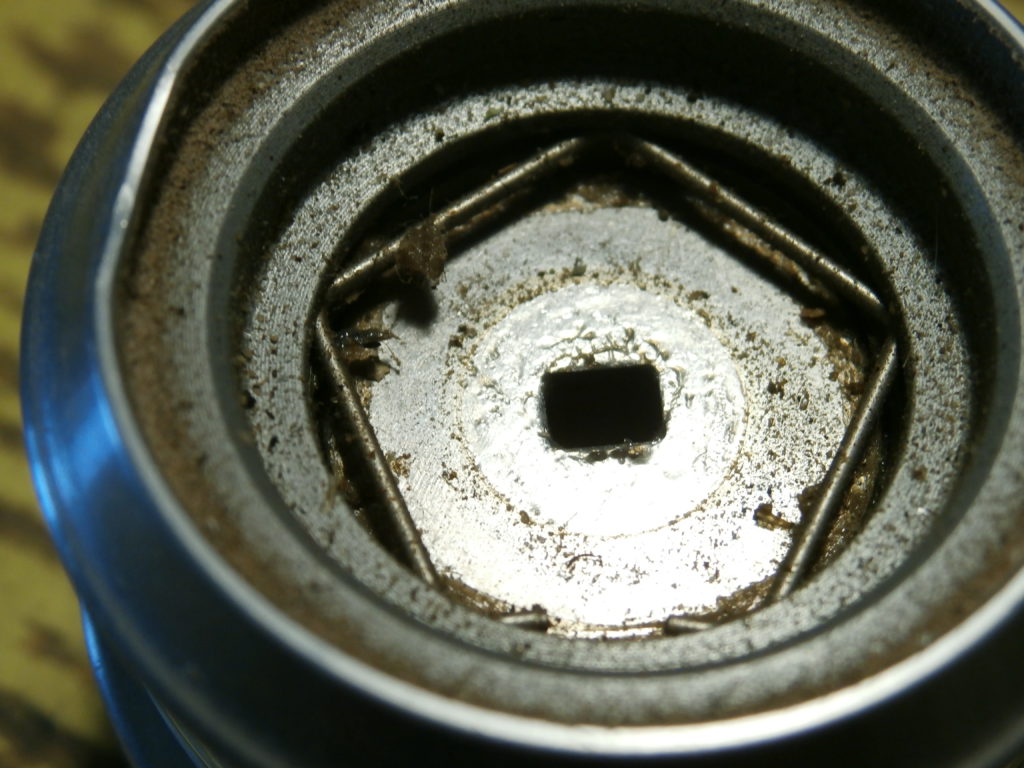
In cases of big swell, heavy current, tanker fish or a steep beach, I like to back reel. Essentially, it is disengaging the dog so the spinner reels backwards. When you have lunging pulls on the drag, you can reel backwards, giving up line while keeping pressure on the fish. This way you do not have to depend on a flawless drag performance. Every little tug or pressure can be relieved by giving up line by back reeling. When a wave crashes on your fish you can keep the pressure on and stay with the fish by giving or taking line. When you feel the pull, you give up line. Once the fish is on the beach you can reengage the drag and finish the fight. It takes some practice to master but it is technique useful in landing big fish in heavy surge.
Maintain tackle
I don’t know if there is a more challenging place to fish light tackle then in the surf. The combination of sand and saltwater are brutal on the fine delicate machinery in a high-end spinning reel. It doesn’t take long for the elements to slow or hamper the function and efficiency of the reel. Sticky bails, lurching drags, and grinding turns are all inevitable when operating in this environment. Any or all of these dysfunctions can be fatal when you hook a trophy fish. With light tackle, you must have your gear functioning at a high level and that means diligent maintenance.
The first rule of surf tackle is you must rinse your gear after each session. Failing to do it just once will retard the function of the reel. The salt will dry within the moving parts and sand will find a home. After fishing, set the sprayer on the hose to wide and spray at 6-inches away. You want to shower the reel letting the water carry away the contaminants. A strong stream will drive the salt and sand into reel. Also spray the rod handle and rod.
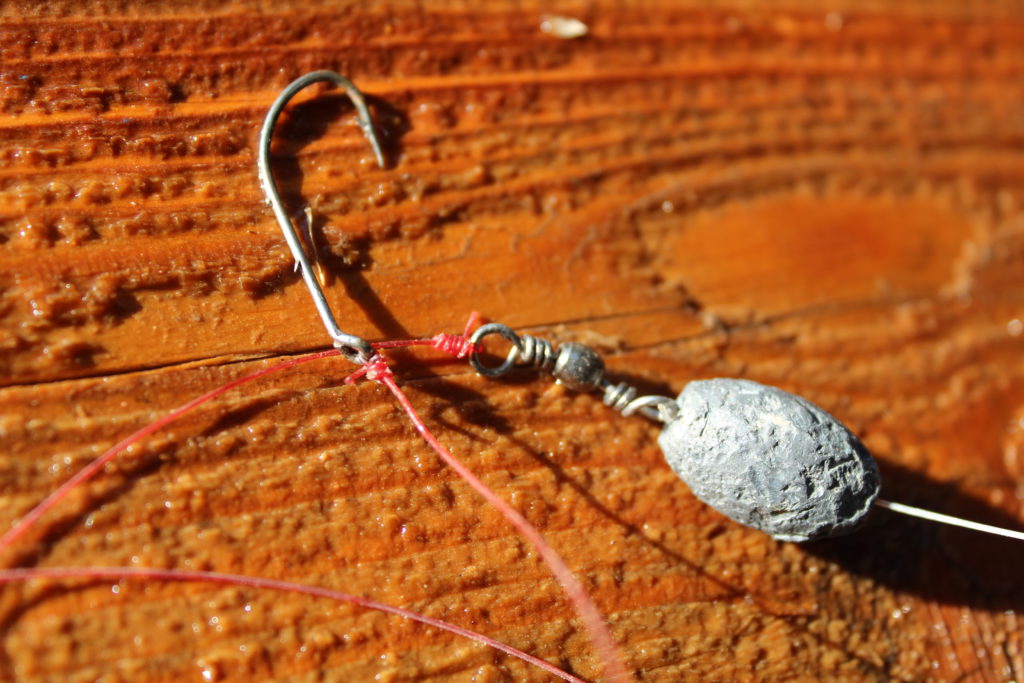
After a half dozen or so sessions or a sand filled breaker wave, you’ll have to do a little more maintenance. First, rinse the reel. Take the spool off. Inspect the top of the drag washers. If they sanded up, you’ll have to remove the holding clip and take out and clean the drag washers. Wipe out the drag well. Re-coat the drag washers with grease. Stack the new drag washers in and replace the holding clip. With the spool off, put a drop of oil on the main shaft. Work the oil in by turning the handle. Clean and oil the bail. Oil the handle shaft and handle knob. This maintenance program should sustain the reel through the summer. After the season, do a thorough overall maintenance or submit the reel to an authorized technician.
Don’t forget the rod. Clean the blank and guides with a soapy mixture. Scrub the handle to remove salt, sand and bait residues. A dirty handle can result in the rod slipping from your hands. Dry the rod and spray silicone on the blank and guides as a protectant.
